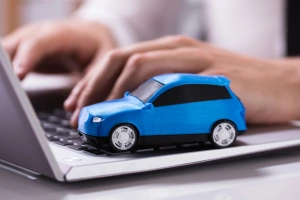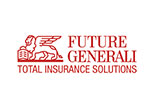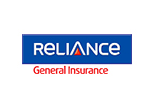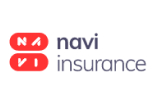Global NCAP Safety Rating for Cars: Complete Details
Global NCAP Ratings Explained
Safety should always come first when buying an automobile. The Global New Car Assessment Programme (NCAP) has been instrumental in securing the highest safety standards. It serves as a kind of global barometer for evaluating new car safety features and standards and offers important information to prospective Indian car purchasers. To truly grasp the importance of the Global NCAP safety rating for cars, let's examine some of its many finer points.
Table of Contents
- How did the Global NCAP Start?
- The Primary Aim: Safety First
- The Testing Procedure: A Strict Analysis
- A Closer Look at the Rating System
- Is your Vehicle Fully Protected even with a high NCAP Rating?
- The Indian Setting: A Change in Safety Paradigm
- Knowledge and Responsibilities of Consumers
- Final Thoughts
- FAQs
How did the Global NCAP Start?
It's important to comprehend the history and development of the NCAP ratings before getting too technical. A UK-based organisation, Global NCAP was founded to increase the capacity for new car assessment programmes worldwide. It also encourages and supports the launch of new programmes in areas where there is a dearth of independent consumer information regarding the safety of new cars. It essentially serves as a gatekeeper, making sure automakers follow the strictest safety guidelines and requirements.

The Primary Aim: Safety First
The principal aim of the Global NCAP is to mitigate the frequency of deaths and severe injuries resulting from automobile accidents by promoting improved vehicle safety performance and design. The initiative aims to improve the safety standards of automobiles sold in the Indian market through the 'Safer Cars for India' campaign. In order to promote consumer welfare, the campaign evaluates the safety of some of the most well-liked cars in India and pushes manufacturers to make changes as soon as possible.
The Testing Procedure: A Strict Analysis
Using a rigorous and comprehensive testing procedure, Global NCAP assigns a safety rating to automobiles. A number of crash tests are part of this procedure to evaluate how well an automobile shields its occupants in the case of an accident. The main types of testing that are done are as follows:
1. Test for Frontal Impact
In this test, the vehicle must collide with a barrier at 64 km/h. The test evaluates the degree of protection provided to the occupants in the case of a frontal accident, with the barrier built to mimic another vehicle.
2. Test for Side Impact
A moving barrier collides with the car's side at 50 km/h in this test. The side-impact test evaluates the vehicle's capacity to protect its occupants from side-impact injuries, with particular attention to the chest, abdominal, and pelvic regions.
3. Exams for Child Protection
The purpose of these tests is to evaluate how well the vehicle protects kids buckled up in child safety seats in the event of an accident. It carefully examines how child seats are installed, paying particular attention to the ISOFIX system, top tether, and support leg when applicable.
4. Tests for Pedestrian Protection
These tests assess the possible dangers and harm that an automobile could inflict on onlookers in the event of an accident. In order to reduce injuries to pedestrians, it evaluates different car front-end designs.
A Closer Look at the Rating System
Based on the vehicle's performance in these crash tests, Global NCAP rates the safety of the vehicle once the testing is completed. Usually, these evaluations are provided on a scale of 0 to 5, where 0 represents the lowest rating and 5 represents the highest. The ratings are based on the total scores of the car's safety aid technologies, adult occupant protection, and child occupant protection.
1. Safety of Adult Occupants
The safety provided to adult passengers in the front and back seats is examined in this section. The research takes into account the possibility of injuries to the head, neck, chest, and legs, among other body parts.
2. Protection of Small Occupants
This section's assessment of the safety measures in cars that shield young passengers is the main topic. The evaluation takes into account how well child restraint devices work and how well the automobile can fit them.
3. Safety Assist
This category assesses the vehicle's active and passive safety measures. These could include components that help prevent accidents or lessen the severity of collisions, such as speed assistance systems, electronic stability control (ESC), and anti-lock braking systems (ABS).
Is your Vehicle Fully Protected even with a high NCAP Rating?
As we have seen above the higher the NCAP rating the more safe the car is for travelling purposes. However, purely relying on NCAP won’t help you cover your financial losses in case of an accident.
Hence, buying car insurance, with all the necessary add-ons, becomes extremely important for all-round safety of your car. Buying comprehensive car insurance with the highest number of coverages should be ideally bought. Secondly, ensuring that you are renewing your car insurance policy every year would ensure that you travel stress-free and continue to enjoy maximum benefits revolving around safety of your car.
Some of the top coverages / add-on covers for your car are -
- Zero Depreciation Add-on Cover: This cover ensures that the value of the parts present in your car don’t go down in value over time. Hence, during a time of claim, you get a coverage equivalent to the original value of the car parts.
- Consumables Add-on Cover: This cover ensures that any nuts, bolts, oil, etc that needs to be changed post an accident is covered and taken care of
- Roadside Assistance Add-on Cover: If your car breaks-down, simply communicate with the insurance company, and they will help in towing your car to the nearest service station.
- Engine Protection Add-on Cover: Engine is one of the most important parts of a car, and hence regular wear & tear is bound to happen, this cover helps you with safeguarding the health of your engine for maximum performance.
- Key-Loss Add-on Cover: Car keys can be expensive and hence losing one can bring a lot of strain on your pocket, by buying a key-loss add-on cover you safeguard yourself from any such mishap.
- Passenger Assistance Add-on Cover: This cover ensures that the passengers travelling with you are protected and taken care of in case of any accident related hospitalisation.
- Tyre Damage Add-on Cover: Tyres are also a very important part of your car and ensuring that the tyres are in top condition is very important. Tyre cover add-on cover ensures replacement of tyres in case of a bad event.
- Return to Invoice Add-on Cover: This special cover provides you with the full value of your car in case of theft, or total loss or damage. This cover helps you get the full invoice value that you paid while buying the car, the only catch being that this cover is available only till the first 3 years of buying the car
- Protection of NCB Add-on Cover: NCB or No Claim Bonus incentivizes car owners to get additional discounts on their premiums if a claim isn’t taken in prior years. As the car gets older the NCB discount also gets higher if you don’t make a claim in continuous subsequent years. Hence, to safeguard the NCB percentage, NCB Add-on cover comes to rescue thereby protecting your NCB value even if you were to take a claim this year.
- Loss of Personal Belongings Add-on Cover: During an unfortunate event of your laptop, phone, wallet being stolen from your car, loss of personal belonging cover ensure that you are compensated fairly for this loss.
The Indian Setting: A Change in Safety Paradigm
India's car industry is booming and offers a wide variety of vehicles to suit various social groups. Recent times have witnessed a discernible shift in emphasis towards safety being given top priority, mostly because of the insights offered by Global NCAP ratings. Modern safety measures are increasingly more frequently included in Indian automobiles, even in versions that are more affordable.
The fact that several Indian vehicles have achieved excellent safety ratings from Global NCAP says a lot about how the country's attitudes towards auto safety are evolving. To protect the safety of the occupants, reputable Indian businesses are raising the bar, adding cutting-edge safety measures, and reinforcing the structure. We are entering a new era where safety is a standard necessity rather than a luxury, thanks to the introduction of cars with high safety ratings, such as the Mahindra XUV300 and Tata Altroz. The best part? You can easily check the NCAP safety rating for Indian cars before buying them.
Knowledge and Responsibilities of Consumers
Consumers can also contribute to improving car safety, even though manufacturers have a big say in the matter. Customers can rely on the Global NCAP ratings as a trustworthy resource when making judgements. India's consumers are becoming more cognizant of the importance of safety features and are prepared to weigh safety ratings heavily when making selections about what to buy.
Additionally, while buying a car, buyers can actively support the safety movement by demanding extensive safety measures. Consumers can push automakers to prioritise safety in their upcoming models by selecting cars with higher safety ratings.
Final Thoughts
In fact, the Global NCAP has completely changed automotive safety regulations around the world, and the Indian auto industry is clearly feeling the effects of this. By using thorough rating systems and stringent testing procedures, it offers an open evaluation of the safety attributes of the many car models that are sold in India.
FAQs
- What is Global NCAP?
The Global NCAP (New Car Assessment Programme) is a nonprofit organisation headquartered in the UK that rates and assesses new car models' global safety performance. It helps consumers make educated selections and pushes automakers to improve their vehicles' safety features through a battery of exacting crash testing and safety evaluations.
- Why do Indian customers care about Global NCAP ratings?
The Global NCAP ratings are an essential tool for consumers in India to compare the safety levels of various automobile models, as traffic accidents are common there. Buyers can choose cars with greater safety features and better road safety for themselves and their families by taking the ratings into consideration.
- How are tests conducted by the Global NCAP conducted?
In response, the Global NCAP performs a number of rigorous crash tests, such as side and front impact tests, as well as assessments of pedestrian and kid safety features. These carefully thought-out tests are meant to mimic actual situations in order to assess the car's capabilities to protect its occupants in the event of an accident.
- What rating system does Global NCAP employ?
The Global NCAP assigns a star rating to cars on a scale of 0 to 5, where 5 represents the highest rating. The grade provides a thorough overview of all the safety features of the car, including technology that aids with safety and occupant protection for both adults and children.
- Can the Global NCAP ratings affect automakers' safety requirements?
In response, yes. In the industry, global NCAP ratings are a powerful standard. A competitive climate where safety becomes a priority is fostered by manufacturers' aspirations to earn higher ratings, which incentivizes them to spend money on research and development to improve the safety features and design of their vehicles.
- Has the Indian auto industry been impacted by the Global NCAP?
In response, the Indian automobile market has been greatly impacted by the Global NCAP. In order to increase their cars' Global NCAP ratings, a number of Indian automakers are currently concentrating on enhancing their models' safety features. Because of this change, even cars in the more affordable sectors are now offering cutting-edge safety features.
- How are the Global NCAP ratings available to consumers?
Answer: The Global NCAP official website provides consumers with access to the ratings. Furthermore, these ratings are frequently included on a variety of automotive news websites, forums, and publications, offering comprehensive insights into the safety features of various automobile models.
- Do any Indian vehicles have high Global NCAP ratings?
Yes, a number of Indian vehicles have achieved high Global NCAP ratings, suggesting that the industry is trending in the right direction. Automobiles with noteworthy ratings, such as the Mahindra XUV300 and Tata Altroz, demonstrate the increasing importance of vehicle safety in the Indian auto industry.
- Can the Global NCAP ratings affect laws and rules made by the government?
The Global NCAP ratings do, in fact, have the power to affect laws and regulations. Governments can encourage manufacturers to comply with higher safety norms and perhaps reduce road fatalities and injuries by using the data and insights from the ratings to create stronger safety standards and laws.
- When buying a car, is the Global NCAP rating the only thing to take into account?
The Global NCAP ratings offer a thorough overview of a car's safety characteristics, but they are not the only thing to take into account when making a purchase. Prior to deciding, buyers should consider additional factors like budget, comfort, performance, fuel economy, and brand reputation. To guarantee a safer driving experience, it is advised to prioritise safety ratings.














































